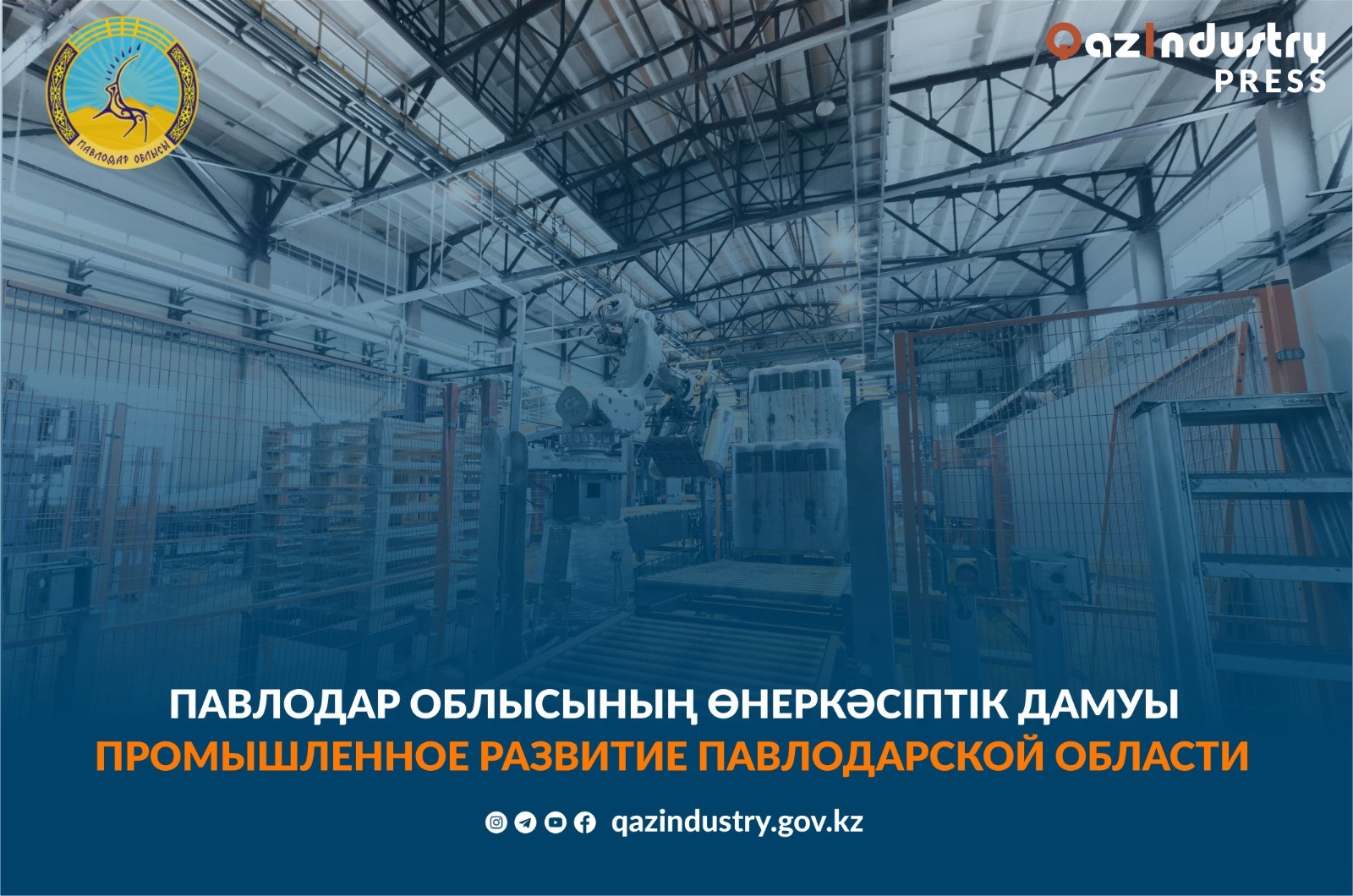Pavlodar region is one of Kazakhstan's most economically developed regions. The region has developed a diversified industrial complex.
In terms of economic specialization, the region is known for its metallurgical industry (an aluminum and ferroalloy production region), power generation, petrochemical engineering, mechanical engineering, and mining sectors. The region's industrial potential is determined by large export-oriented companies.
Pavlodar region has a progressive and diversified economy, as well as a solid resource base. A leading role is occupied by it in republican territorial division of labor: 60% of coal is mined here, 44.3% of electricity is generated here, 76.1% of ferroalloys are produced here, 41.7% of gasoline is produced there, and 100% of the republican alumina and raw aluminum is produced here.
A 3.8% share of Pavlodar region's gross domestic product in Kazakhstan's first quarter of 2023, or 892.1 billion tenge, makes it the ninth most important region in the country. In the structure of the region's GRP, industry occupies the largest share (47.3%), wholesale and retail trade (8.8%), taxes on products (8.6%) and real estate transactions (8.4%).
According to the structure of the industry of the republic for January-July 2023, Pavlodar region accounted for 6.7% of its total income, or 1,752.7 billion tenge, an increase of 1% over the same period last year. An increase in mechanical engineering production, mining and quarrying, as well as electricity production, transmission, and distribution, explains the growth of the indicator.
Comparing January-July 2023 to last year, the manufacturing sector's industrial production index decreased by 1.1%. Meanwhile, the manufacturing sector accounts for 61.2% of the structure of industry (1,073.1 billion tenges). For January-July 2023, the region's manufacturing participation was dominated by industries such as metallurgical production (63.3%), mechanical engineering (9.6%), and production of coke and refined petroleum products (8.9%).
A total of 238.9 billion tenge was invested in fixed capital of industry from January through July 2023, which represents 6% of the country's volume. Among the manufacturing industries, metallurgical production received the largest amount of investments (52.3%), followed by production of non-metallic mineral products (17.4%), and then coke and refined petroleum products (14.3%).
A total of 1052 companies operate in the manufacturing industry of Pavlodar region (5.1% of the country indicator), including 1008 small, 25 medium, and 19 large enterprises.
Among the top three regions for producing manufacturing goods in the country, Pavlodar ranks third with 22 goods. Manufacturing includes machine tools for metal processing, truck cranes, seamless steel pipes for oil and gas pipelines, raw aluminum, and more.
Pavlodar region exports of commodities totaled $1,223.9 million in the first half of 2023, 24.9% lower than in the corresponding period of 2022.
Compared to the same period in 2022, imports were $681.6 million, an increase of 25.7%.
As far as external export partners are concerned, Russia (23.5%), China (18.1%) and Turkey (10.8%) import ferrochromium, unalloyed raw aluminum, aluminum oxide, ferrosilicomanganese and others.
A majority of Pavlodar region's imports are engineering products (33.8%), metallurgy (26.7%), chemicals (9.1%), coke and refined petroleum products (5.5%) as well as other products, mostly from Russia (71.1%), China (7.7%) and Germany (4.3%).
Since Pavlodar has significant natural resources and land, a developed transport infrastructure, cheap electricity, and an economic zone with tax advantages, it has the potential to play a transit role as a result of its favorable geographical location.
An economically balanced region (both extractive industries and primary processing of raw materials), energy self-sufficiency, and good logistical conditions (access to the Trans-Siberian Railway) surrounds the Pavlodar region, which is surrounded by three million-plus cities. Taking into account interregional competition for skilled labor and investments, ensuring the quality of life, the urban environment, as well as the environment of the regional center - Pavlodar - is of paramount importance.
In terms of the development of energy-intensive industries (heavy engineering), Pavlodar region remains a promising region due to an abundance of electricity and energy carriers.
As part of developing cross-border cooperation with the Russian Federation regions bordering the Pavlodar region (in the north, with Omsk, in the northeast, with Novosibirsk, in the east, with Altai Territory), the potential for industrial cooperation was identified, taking into account both states' needs and their transportation shoulder.
Industry cooperation potential is defined by a list of promising products within engineering, metallurgy, and chemistry. The production of flat-rolled products with a width of 600 mm made of iron or non-alloyed steel, porous strips or strips of polyurethane, other sacks and packaging bags made of strips or similar shapes made of polyethylene or polypropylene, bearings with cylindrical rollers made in Omsk, and other bog products made in the Altai Territory are the largest possible exports to the Novosibirsk region.
In general, the economy of Pavlodar region is characterized by an average level of economic concentration.
Niche areas in the manufacturing industry of the region can be the production of the following types of products: ion-exchange resins; amino-aldehyde and phenol-aldehyde resins; polyurethanes; glue and other adhesives; parts and accessories for machine tools for processing metal, stone and wood; transmission shafts, metal-rolling machines and rolls for them; parts and accessories of motor vehicles; glass, multilayer insulating glass products; fiberglass; products from ferrous metals; springs, springs and sheets from ferrous metals; heating radiators; railway or tram cars; cargo non-self-propelled trailers and semi-trailers.
It is determined by using the product complexity index of exported goods of Pavlodar region and the revealed comparative advantage (RCA).





